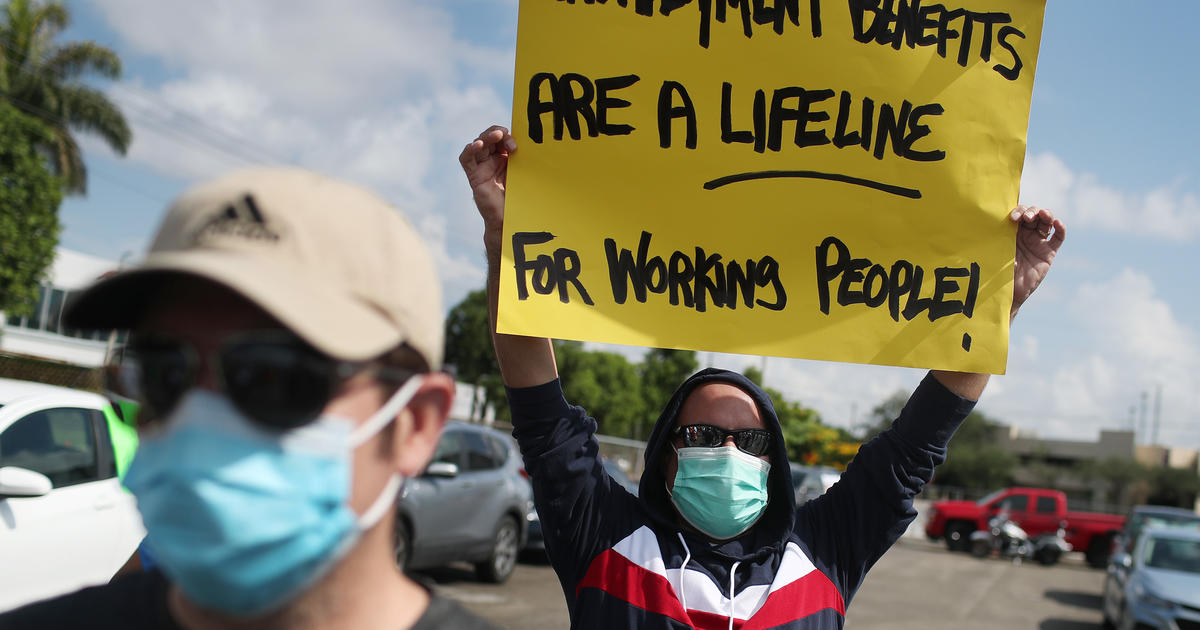Unemployment aid will continue to provide a lifeline for millions of workers who continue to struggle to find a job amid the coronavirus pandemic, thanks to President Donald Trump’s signature on the $900 stimulus bill that extends three major jobless programs.
But when those benefits actually land in the pockets of jobless people has come into question due to Mr. Trump’s delay in signing the relief bill, citing his opposition to its $600 stimulus checks that he called “ridiculously low.”
Two major programs for the jobless, which provided aid to more than 12 million unemployed workers, expired on December 26 — or the day before Mr. Trump signed the bill.
The Pandemic Unemployment Assistance (PUA) program, which covers gig workers and self-employed workers; and the Pandemic Emergency Unemployment Compensation (PEUC) program, which provides additional weeks of jobless aid to those who have run out of their regular state unemployment benefits, both expired December 26.
Because the bill was signed a day after those two unemployment programs ended, concerns have been raised that jobless workers may suffer from a gap in aid payments. But experts say it’s unlikely that benefits will lapse because of that, and the Department of Labor told The Hill that it “does not anticipate that eligible claimants will miss a week of benefits due to the timing of the law’s enactment.”
However, there could be delays in people getting the benefits because states will need to reprogram their computers with new dates, noted Michele Evermore, senior policy analyst at the National Employment Law Project. Jobless workers will receive back pay for the amount they are owed once their state’s systems are up and running.
“It’s a huge relief for a few weeks, especially the $300” in extra weekly jobless benefits, Evermore said. “One thing that people don’t realize is that the average unemployment benefit is at poverty level in many states.”
The Department of Labor didn’t immediately return a call requesting comment.
11 more weeks of benefits
The stimulus bill will extend both the PUA and PEUC programs for 11 weeks, as well as top up regular state benefits with an extra $300 in weekly jobless aid — or half of the extra $600 in aid received by jobless workers at the start of the pandemic and which expired in July.
At the same time, the number of people applying for jobless aid remains at a high level, showing that the coronavirus continues to take a toll on the economy.
“A lot of workers are concerned because they have gone in the hole during their unemployment; they have built up debt,” said Andrew Stettner, an expert on unemployment with the left-leaning Century Foundation. “Some of the research shows that the average unemployed person has a negative net worth.”
The extra $300 a week, as well as additional weeks of unemployment, probably won’t be enough for many jobless workers to dig themselves out of debt, Stettner added, but would likely help many meet their basic needs — at least until the programs expire in mid-March.
Kenneth Elliott, 50-year-old ride-hail driver in West Palm Beach, Florida, has been out of work since March. Between April and July he was able to qualify for $600 a week in additional benefits, which covered his expenses. But since August, he’s been living on just $275 a week in state unemployment benefits, “which is kind of not survivable,” he told MoneyWatch recently.
Several months ago, Elliott gave up his own apartment and moved in with a friend to try to save on housing costs, he told CBS MoneyWatch. But the $275 still doesn’t cover all his expenses, which include medical insurance, car insurance and his telephone bill, so he’s found himself falling behind on rent.
“I’ve been fortunate to have a very understanding landlord that’s trying to work with me, but I don’t know how far that’s going to go,” Elliott said. “I’m getting down to the wire.”
Weeks of waiting?
It could take about two to three weeks for states to start paying out the extra $300 in weekly benefits, Stettner said. Those benefits stem from the Federal Pandemic Unemployment Compensation (FPUC) program, which was created by the Coronavirus Aid, Relief, and Economic Security (CARES) Act in March, but expired in July. In order to get those $300 payments out, states will first need to get that program up and running again after a long gap.
Unemployment programs are run independently by each state, and jobless workers apply for aid through their state labor departments. Depending on the efficiency of their state’s computer systems and staffing, jobless workers can experience very different wait times for receiving benefits. Some states may be able to send the $300 in FPUC benefits quickly, but others may see longer delays.
For instance, 8 of 10 jobless workers in Wyoming receive their jobless benefits within 14 days of being deemed eligible for the benefits, according to the Century Foundation. But only 2 in 10 out-of-work people in Kentucky receive their first payments within two weeks.
Cliff averted
About 12 million Americans were receiving jobless benefits through the PUA and PEUC programs which expired on December 26.
Those two programs, now extended through March 14, pay regular state unemployment benefits, which on average are slightly more than $300 per week.
But the extension is only for 11 weeks. It’s unlikely that the economic turmoil caused by the pandemic will be over by the time this round of benefits expires in mid-March, which means lawmakers may be debating more jobless aid in 2021.
“I don’t think we will be done with the pandemic and the recession in 11 weeks,” Evermore noted.

















